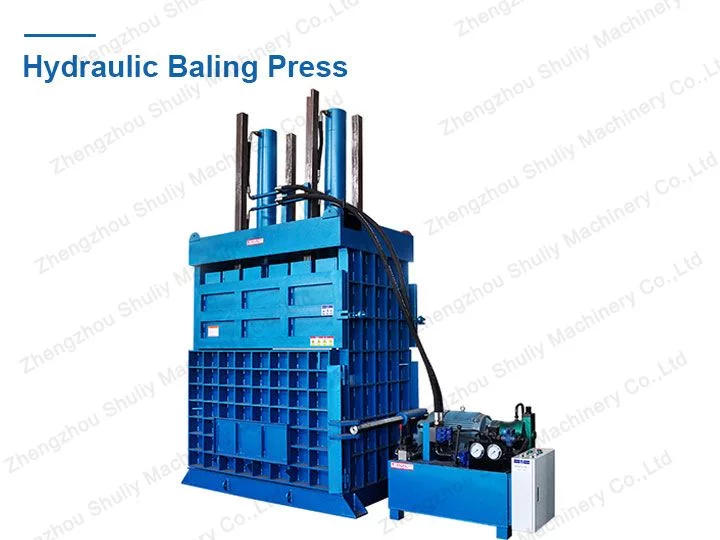Hydraulic baling press, also known as a hydraulic baler or baling machine, is an essential piece of equipment used for compressing and baling various materials. It utilizes hydraulic power to exert pressure and compact materials into dense and manageable bales.
This article explores how the hydraulic baling press works, its advantages, applications across industries, tips for selecting the right machine, pricing considerations, as well as common troubleshooting issues and their solutions.
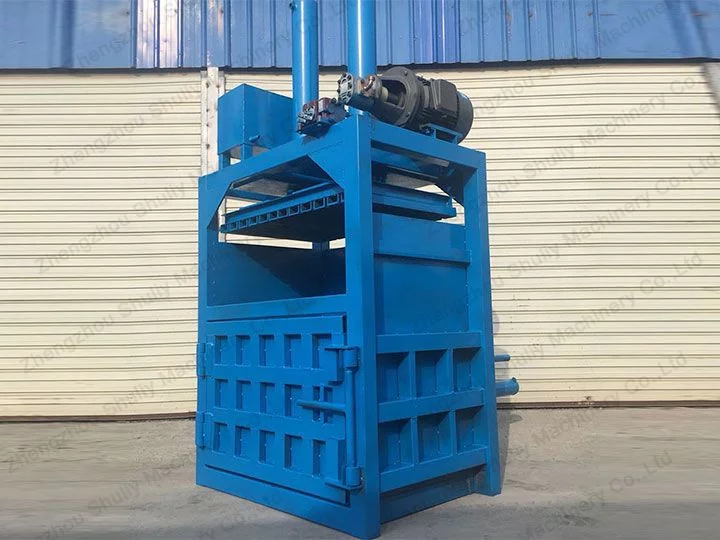
How does a hydraulic baling press work?
Hydraulic baling press operates on the principle of utilizing hydraulic force to compress materials. The process involves several key components, including a compression chamber, vertical compression cylinder, hydraulic system, and power system.
When activated, the hydraulic pump delivers oil under pressure to the cylinders, causing the rams to move and apply force on the material. As a result, the material is compacted and formed into bales that can be easily handled and transported.
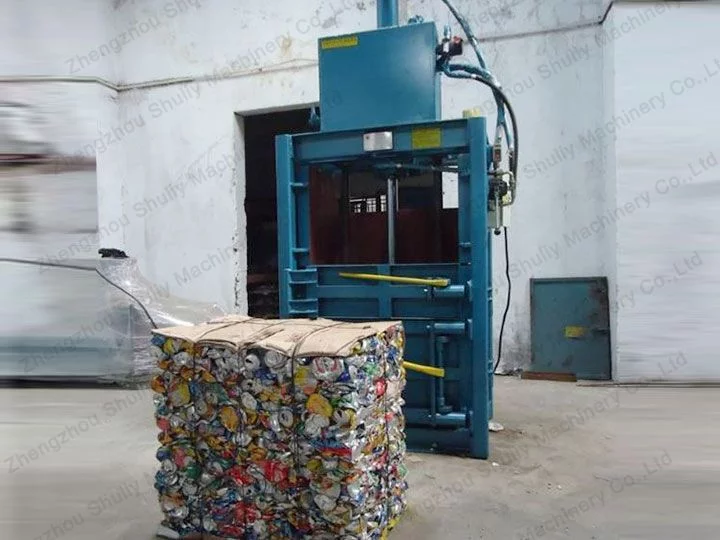
Specification of hydraulic baling machine
| Model | SLV-15 | SLV-30 | SLV-60 | SLV-80 | SLV-120 |
| Capacity(t/h) | 0.6-0.8 | 0.8-1 | 1.5-2 | 2-3 | 4-5 |
| Power(kw) | 5.5-7.5 | 5.5 | 7.5 | 11 | 18.5 |
| Pressure(t) | 15 | 30 | 60 | 80 | 120 |
| Bale weight(kg) | 20-40 | 100 | 300 | 400-500 | 400-600 |
| Machine weight(t) | 1 | 1.2 | 1.5 | 2 | 3.2 |
| Bale size(mm) | 600*400*200-500 | 800 *400*600 | 900 *600 *800 | 1100 *800 *1000 | 1200 *800 *1200 |
The picture shows the parameters of 5 best-selling hydraulic balers. The output is 0.6-0.8 tons per hour, 0.8-1 tons per hour, 1.5-2 tons per hour, 2-3 tons per hour and 4-5 tons per hour. In addition, we have also other hydraulic baler machines for sale. You can choose the right hydraulic baler according to your needs.
Besides this machine, we also have horizontal baling press and industrial balers for customers to choose.
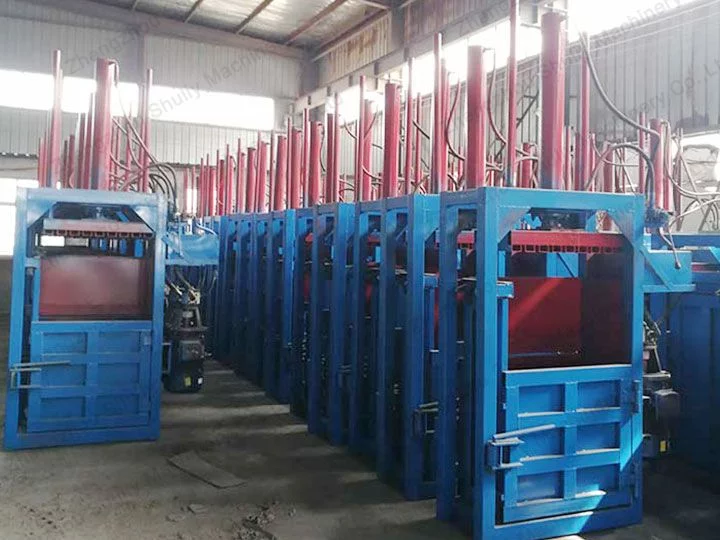
Benefits of hydraulic baler machine
- Efficient Compaction: Hydraulic baling press provides high compaction force, allowing for efficient reduction of material volume and optimizing storage or transportation space.
- Versatility: It can process a wide range of materials such as cardboard, paper, plastics, textiles, metal scraps, and agricultural products.
- Time and Labor Savings: The automation and power of hydraulic systems enable quick and effortless baling, reducing manual effort and saving time.
- Environmental Impact: By compacting materials, hydraulic balers contribute to waste management and recycling efforts, promoting sustainability and reducing landfill usage.
Applications of hydraulic baling press
- Recycling Facilities: Used for baling recyclable materials such as paper, cardboard, plastics, and metal scraps.
- Manufacturing and Distribution Centers: Used to compress baling materials, reducing waste and optimizing storage space.
- Agriculture: Employed to bale agricultural products like hay, straw, and cotton for storage, transport, and animal feed purposes.
- Textile Industry: Used for baling textile waste, fabric scraps, and fibers.
- Waste Management: Applied in waste processing plants for compacting municipal solid waste and facilitating disposal.
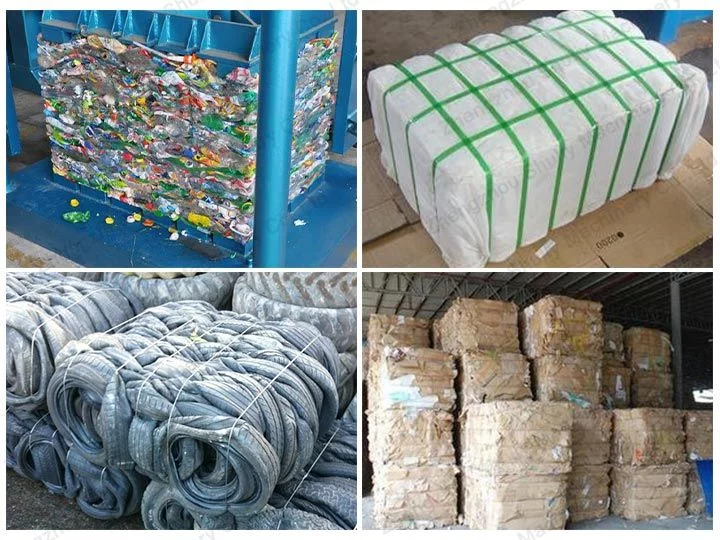
How to select the right hydraulic baling press?
- Material Type and Volume: Determine the materials you need to bale and their estimated quantity to select an appropriate press with the necessary capacity.
- Space Availability: Evaluate the available space for the machine installation, including height, width, and operational clearances.
- Baling Requirements: Assess factors such as bale size, weight, density, and tying options to match your specific needs.
- Safety Features: Ensure the machine incorporates necessary safety features to protect operators and comply with safety regulations.
- Maintenance and Support: Consider the availability of spare parts, maintenance requirements, and technical support from the hydraulic bale press manufacturer.
What is the price of a hydraulic baling press machine?
The price of hydraulic baling presses varies based on several factors, including capacity, features, brand reputation, and market conditions. You should first consider whether the machine’s quality, size, etc. meet your needs. Then ask the machine manufacturer whether the after-sales service is perfect. Don’t just focus on upfront costs. If you want to know the price of the hydraulic baler, welcome to contact us.
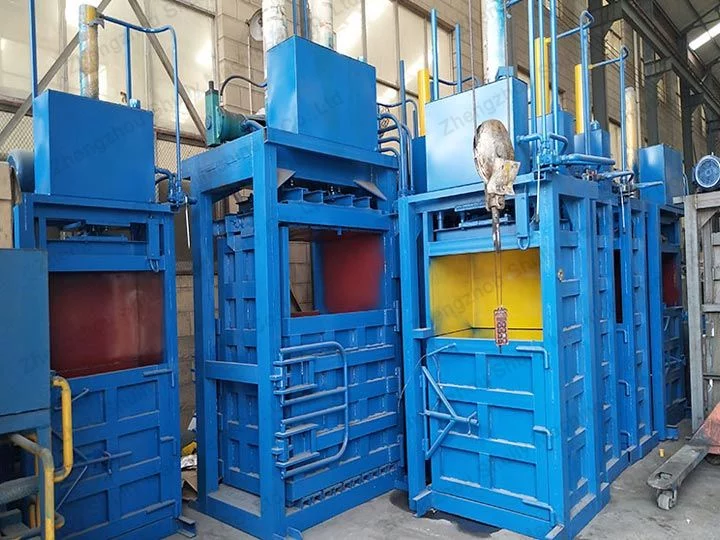
Hydraulic baler machine for sale
As a professional hydraulic bale press manufacturer, Shuliy Baler Machinery has many types of baler machine for sale. The output of the machine varies from 0.6 tons per hour to 6 tons. For specific machine parameters, you can refer to our parameter table. If you have other questions about hydraulic balers, please feel free to contact us.
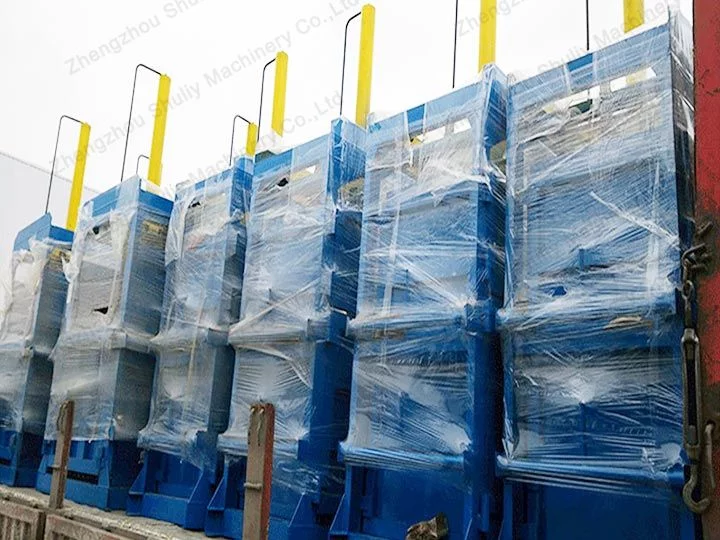
Common troubleshooting and solutions for hydraulic baling press
- Hydraulic Fluid Leaks: Inspect hydraulic hoses, fittings, and seals for any signs of leaks. Replace damaged components and ensure proper tightening.
- Insufficient Compaction: Check hydraulic pressure levels and adjust if necessary. Examine the ram alignment and ensure uniform material distribution.
- Contamination in Hydraulic System: Regularly monitor and maintain the hydraulic fluid to prevent contamination. Replace filters and clean reservoirs as recommended by the manufacturer.
- Overheating: Check the hydraulic system’s temperature and ensure proper cooling mechanisms are in place. Clean or replace clogged heat exchangers and ensure adequate airflow around the machine.
- Electrical Issues: Inspect electrical connections, switches, and controls for any malfunctions. Replace faulty components and ensure proper grounding.
- Cylinder Misalignment or Damage: Inspect cylinders for misalignment, leaks, or damage. Adjust or replace cylinders as necessary, and ensure proper lubrication of moving parts.
- Malfunctioning Control System: Troubleshoot control system components such as valves, sensors, and PLCs. Calibrate or replace faulty components, and ensure proper programming and settings.

